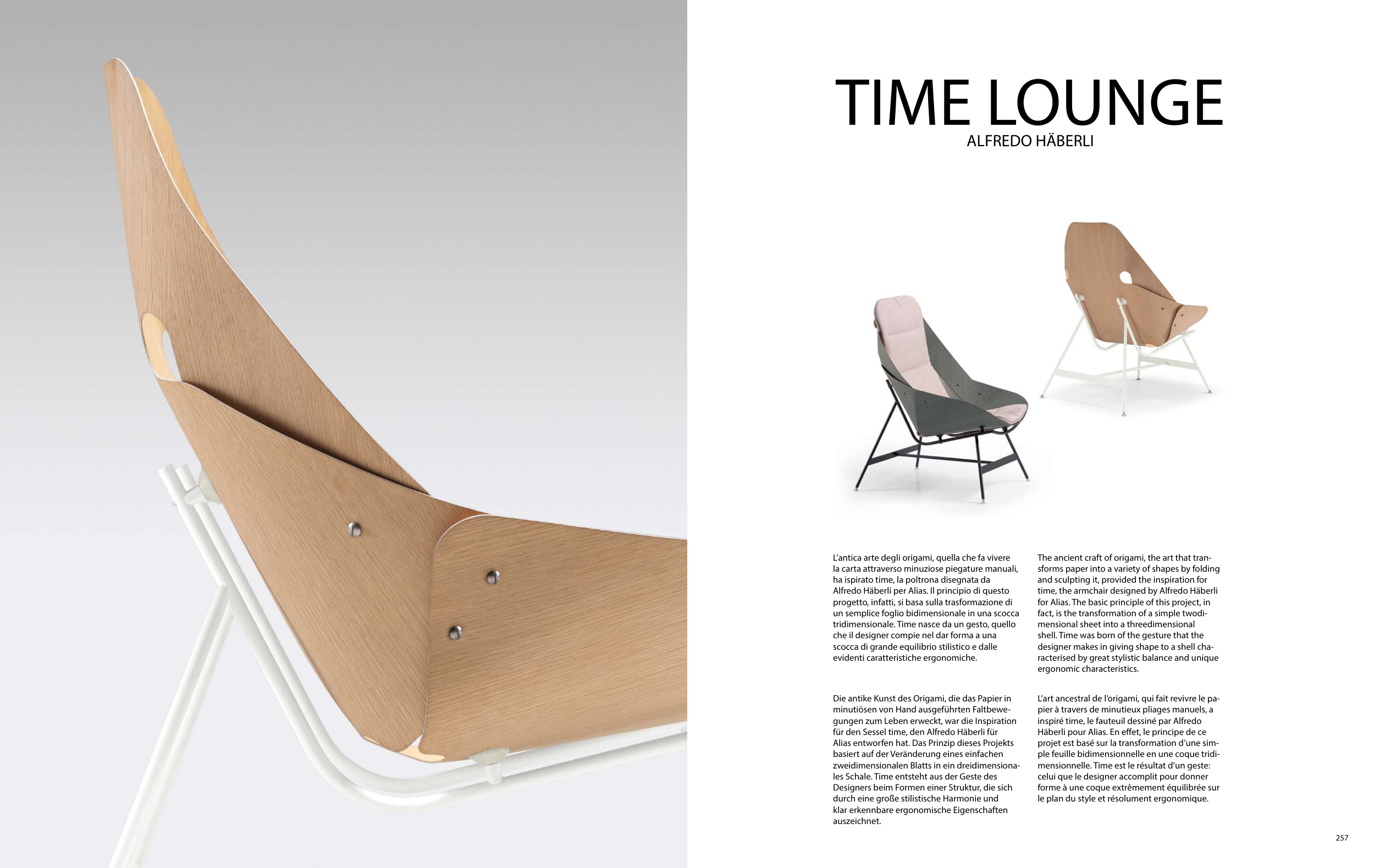257
L’art ancestral de l’origami, qui fait revivre le pa-
pier à travers de minutieux pliages manuels, a
inspiré time, le fauteuil dessiné par Alfredo
Häberli pour Alias. En effet, le principe de ce
projet est basé sur la transformation d’une sim-
ple feuille bidimensionnelle en une coque tridi-
mensionnelle. Time est le résultat d’un geste:
celui que le designer accomplit pour donner
forme à une coque extrêmement équilibrée sur
le plan du style et résolument ergonomique.
Die antike Kunst des Origami, die das Papier in
minutiösen von Hand ausgeführten Faltbewe-
gungen zum Leben erweckt, war die Inspiration
für den Sessel time, den Alfredo Häberli für
Alias entworfen hat. Das Prinzip dieses Projekts
basiert auf der Veränderung eines einfachen
zweidimensionalen Blatts in ein dreidimensiona-
les Schale. Time entsteht aus der Geste des
Designers beim Formen einer Struktur, die sich
durch eine große stilistische Harmonie und
klar erkennbare ergonomische Eigenschaften
auszeichnet.
The ancient craft of origami, the art that tran-
sforms paper into a variety of shapes by folding
and sculpting it, provided the inspiration for
time, the armchair designed by Alfredo Häberli
for Alias. The basic principle of this project, in
fact, is the transformation of a simple twodi-
mensional sheet into a threedimensional
shell. Time was born of the gesture that the
designer makes in giving shape to a shell cha-
racterised by great stylistic balance and unique
ergonomic characteristics.
L’antica arte degli origami, quella che fa vivere
la carta attraverso minuziose piegature manuali,
ha ispirato time, la poltrona disegnata da
Alfredo Häberli per Alias. Il principio di questo
progetto, infatti, si basa sulla trasformazione di
un semplice foglio bidimensionale in una scocca
tridimensionale. Time nasce da un gesto, quello
che il designer compie nel dar forma a una
scocca di grande equilibrio stilistico e dalle
evidenti caratteristiche ergonomiche.
ALFREDO HÄBERLI
TIME LOUNGE


